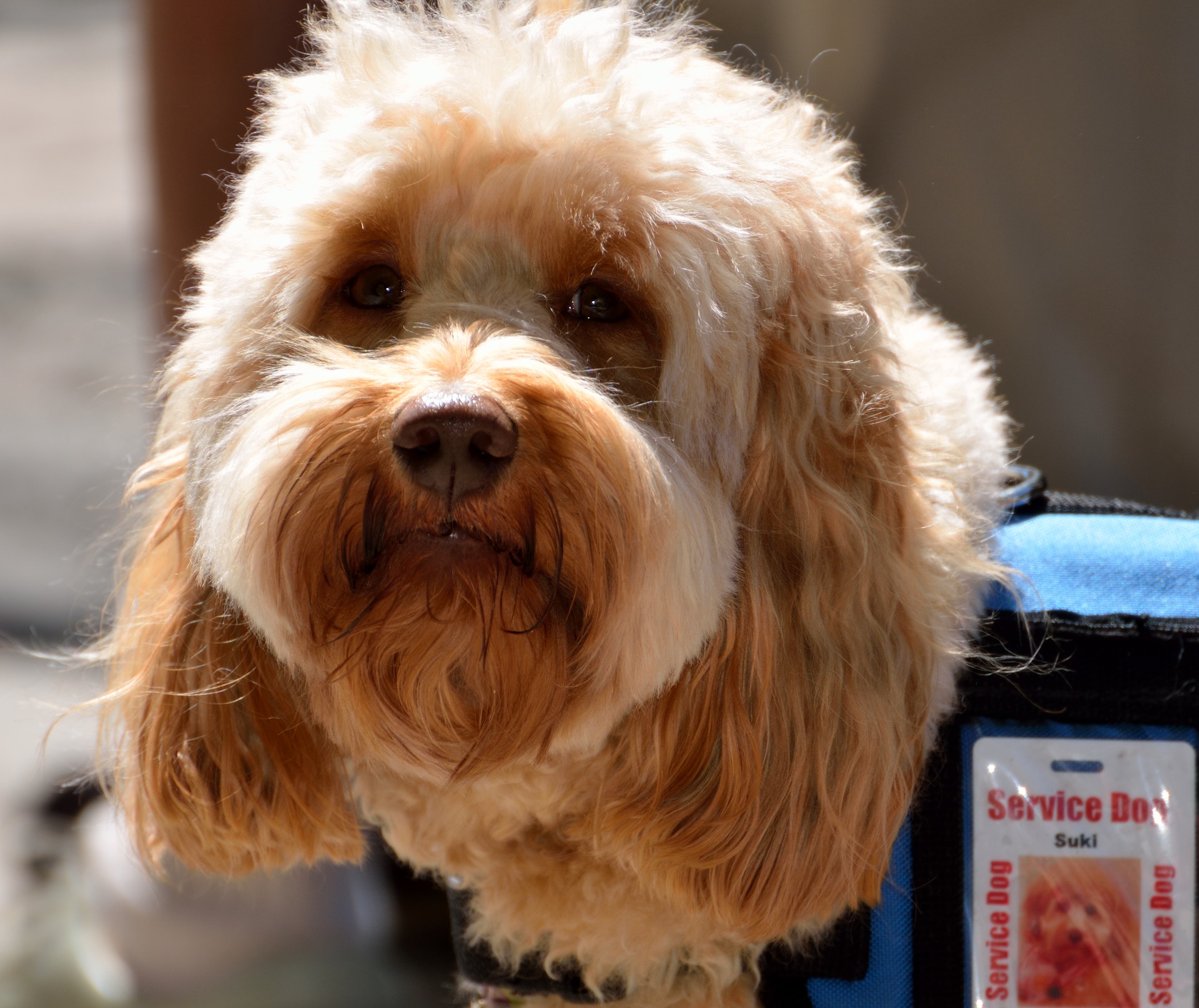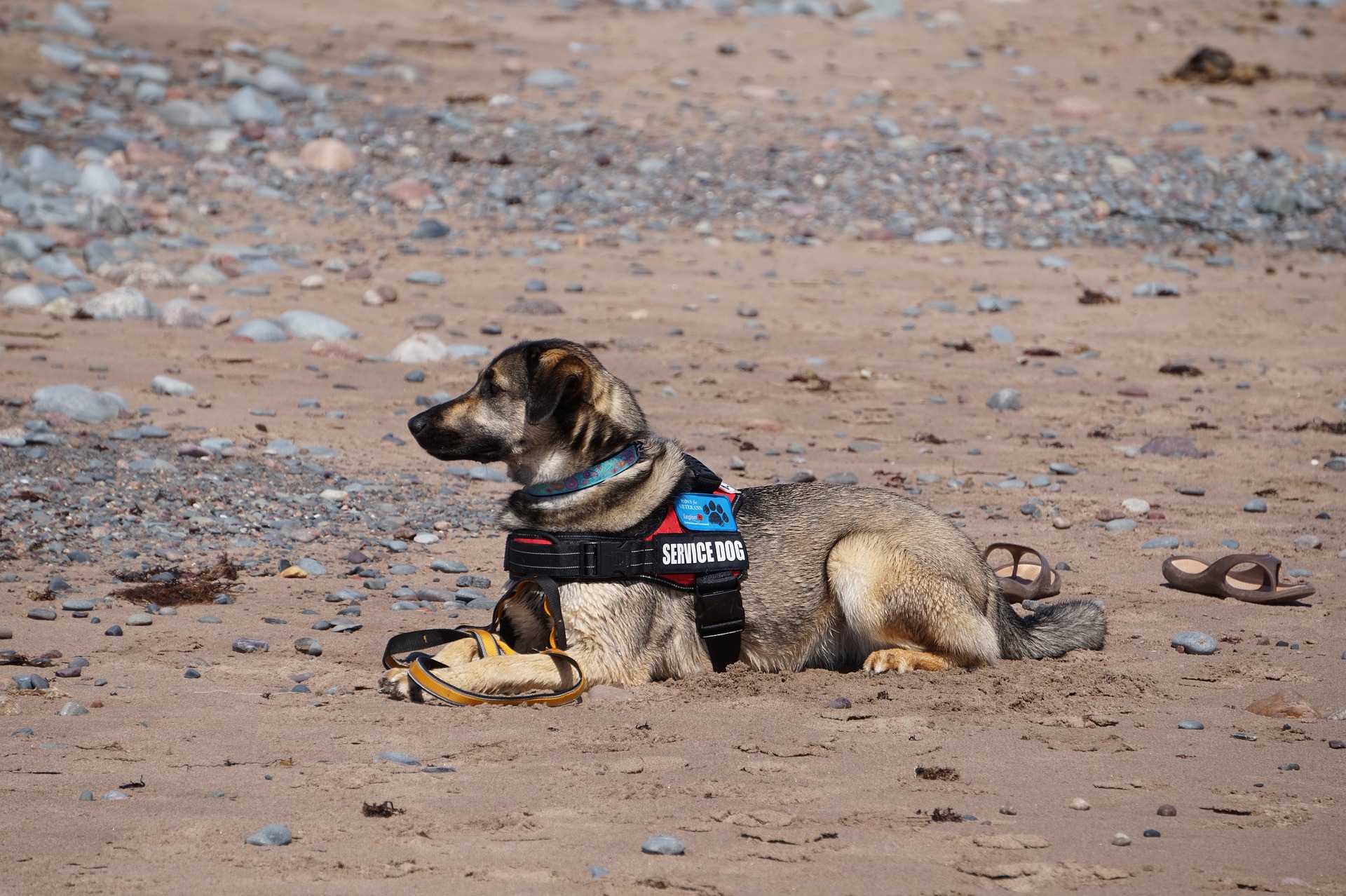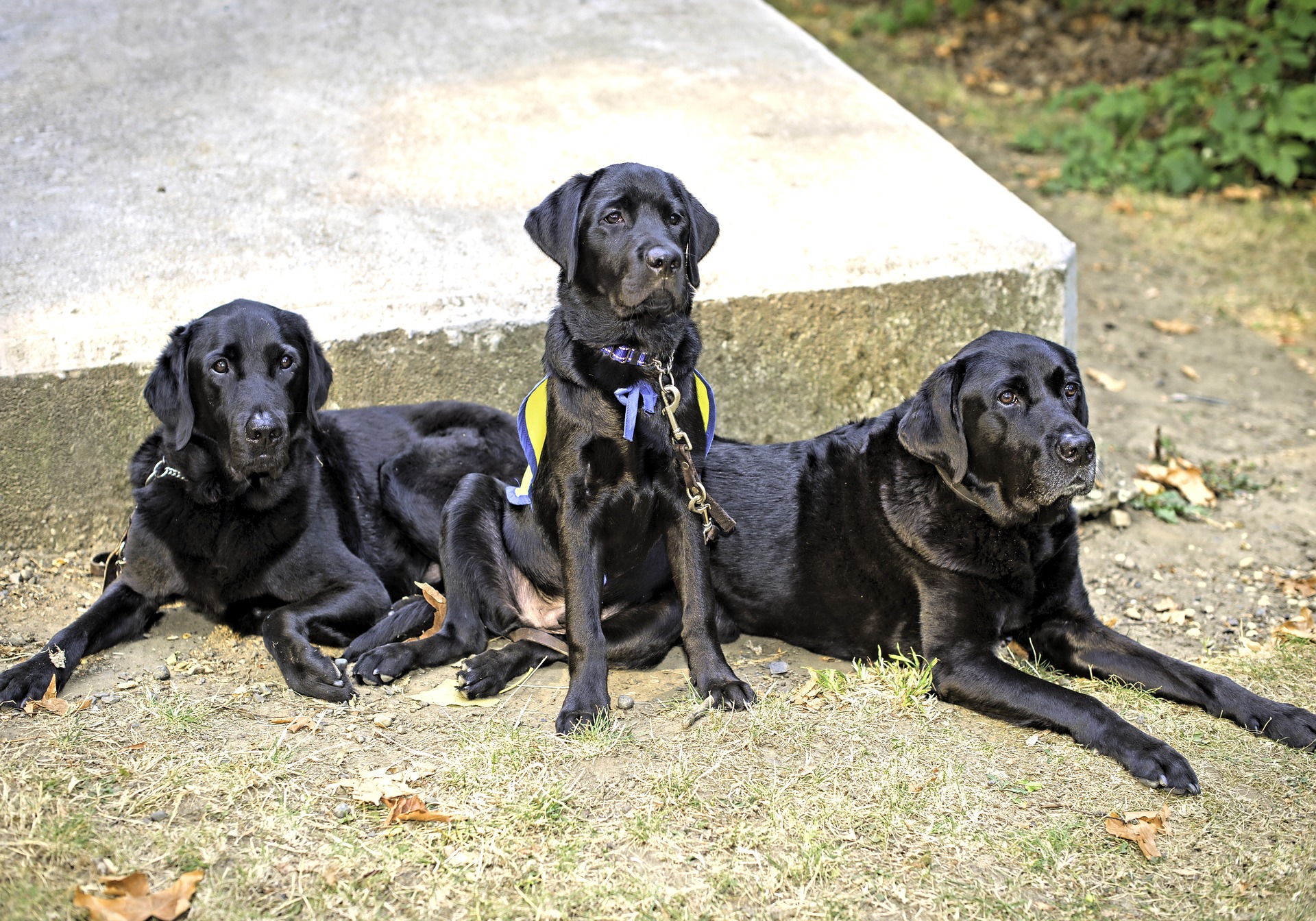Service Dogs

For many of us, our dogs are an important part of our daily lives. They act as faithful companions, work with us in various capacities, and bring joy to nearly everyone they meet. In the last 100 years, dog ownership has increased dramatically, and today, dogs as companions and working partners are valued by millions of people in the United States alone.
Multiple studies have provided evidence that dogs offer numerous health benefits and lower stress, improve happiness, and increase fitness. Service dogs do all of these things for their human companions and are also trained to perform tasks to assist individuals with disabilities. Over the last decade, the use of service dogs has rapidly expanded.
The benefits that service dogs provide continue to expand as we move forward with technology. In the 1920s, the only service dog was a Seeing Eye Dog which meant a German Shepherd Dog. In 2019, service dogs were trained from among many different breeds and perform an incredible variety of tasks to assist disabled individuals.

Service dogs are trained to take specific actions to assist their human companion whenever needed. Service dogs perform tasks that are directly related to their companions' disability. For example, hearing dogs help alert deaf and hard-of-hearing individuals to important sounds, guide dogs assist visually impaired individuals in navigating their environments, mobility dogs help individuals who use walking devices, wheelchairs, and people who have balance issues, and medical alert dogs can alert their human companion to the onset of medical issues such as low blood sugar or seizures, or they can alert their human companion to allergens. Service dogs are considered to be primarily working animals that are not considered pets.
Service dogs range in size from very large to very small, depending on their required tasks. For example, a Papillon wouldn't be an appropriate choice for mobility assistance but could be excellent as a hearing dog. Breeds like Saint Bernards, Bernese Mountain Dogs, and Great Danes possess the height and strength to provide mobility assistance. However, Poodles, which come in Toy, Miniature, and Standard varieties, are exceptionally versatile. A Toy Poodle can begin scent training games when they're puppies in preparation to alert for blood sugar changes. In contrast to the smaller variations, a larger Standard Poodle can learn to carry objects and activate light switches. The most common breeds trained to be guide dogs are Golden Retrievers, Labrador Retrievers, and German Shepherd Dogs.

Most service dog training programs work closely with reputable breeders to ensure that the puppies trained to become service dogs are appropriate for the program. They are assessed based on their health, temperament, and behavioral history of both of the puppy's parents. Many groups also select high-energy dogs from rescue groups and animal shelters for training as hearing dogs.
However, the most important thing, regardless of breed or mix, the best service dogs are handler-focused, desensitized to distractions, and highly trained to perform specific tasks reliably. They are not easily diverted from their tasks at home or in public and remain attentive and responsive to their owners while working. Service dogs do incredibly important work, and many people are able to benefit from their assistance.

